
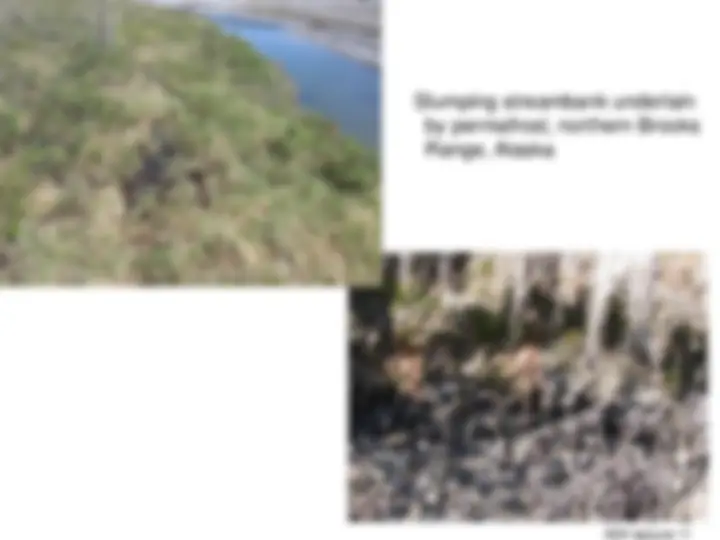
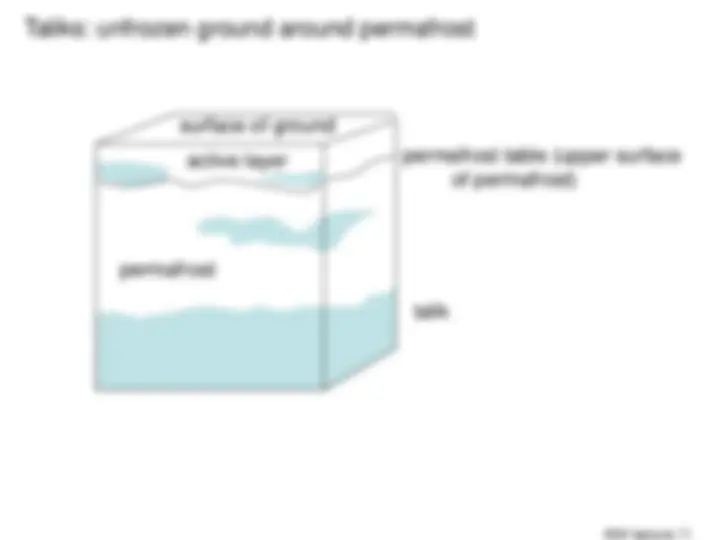
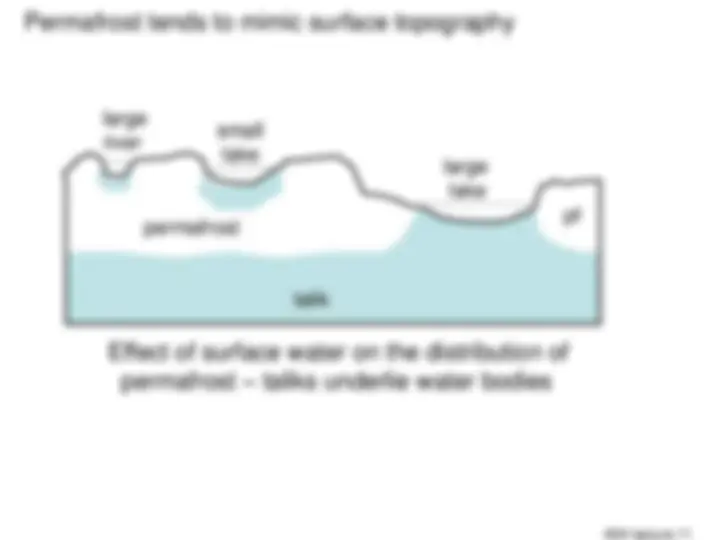
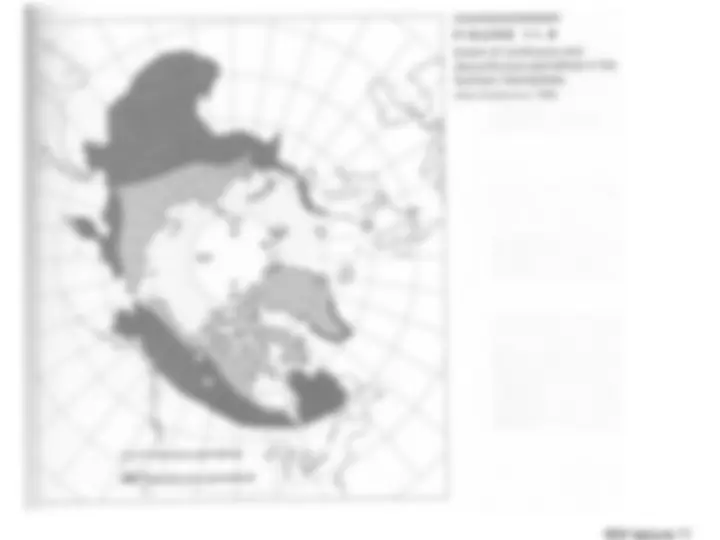
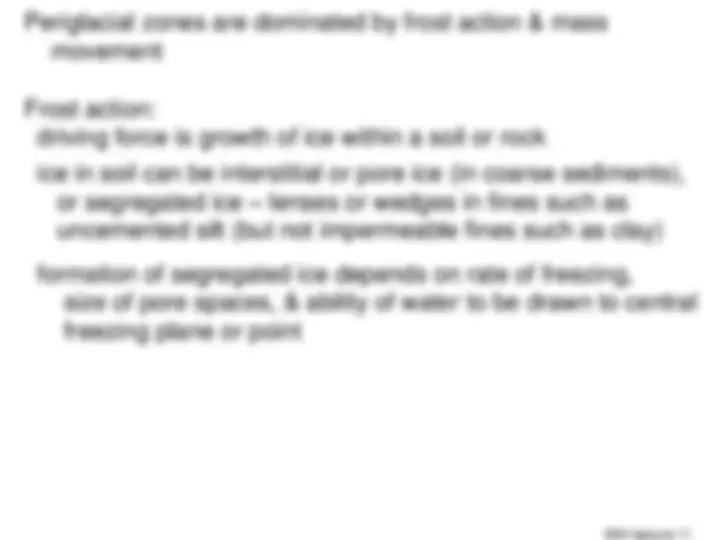
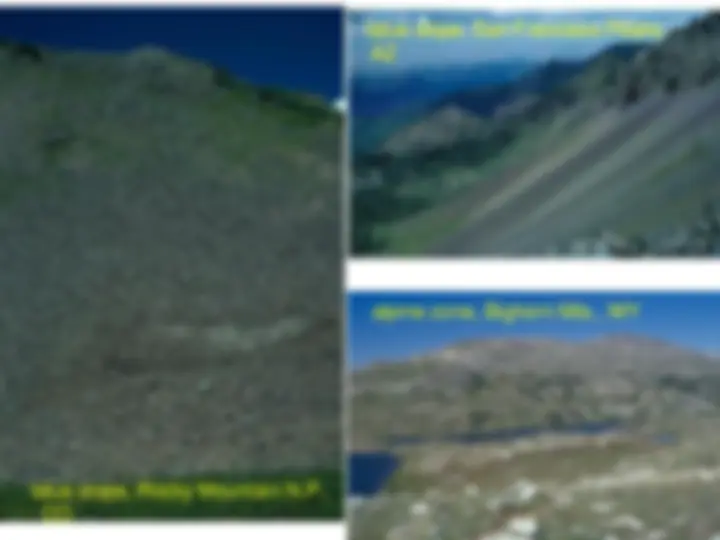
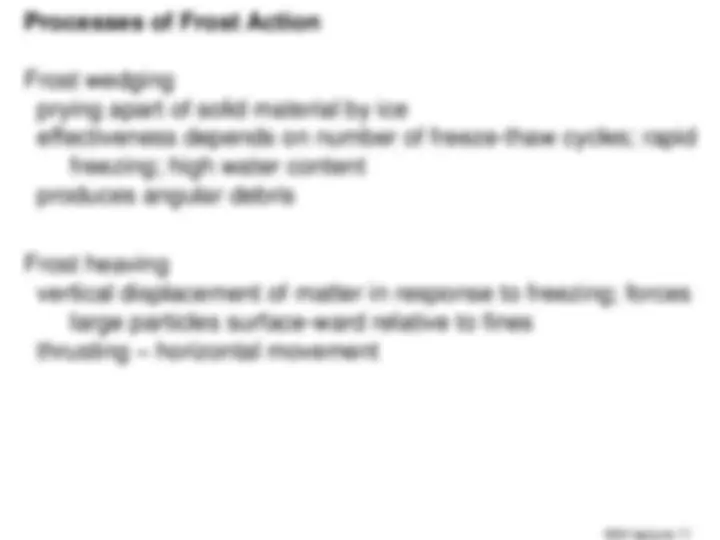
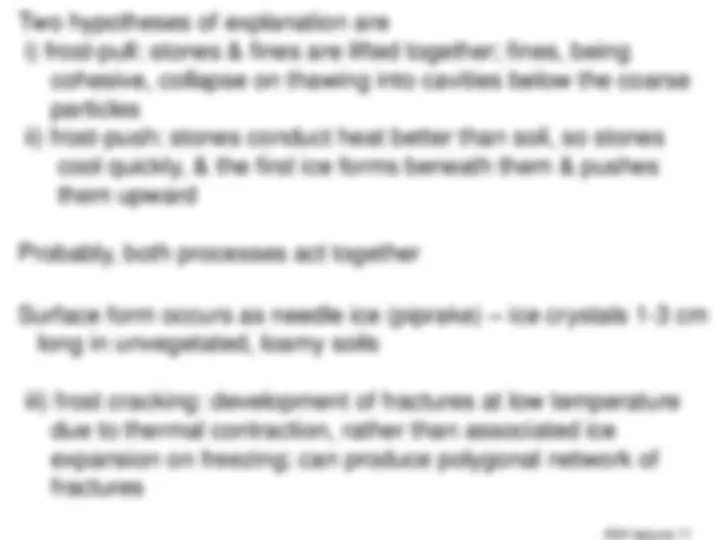
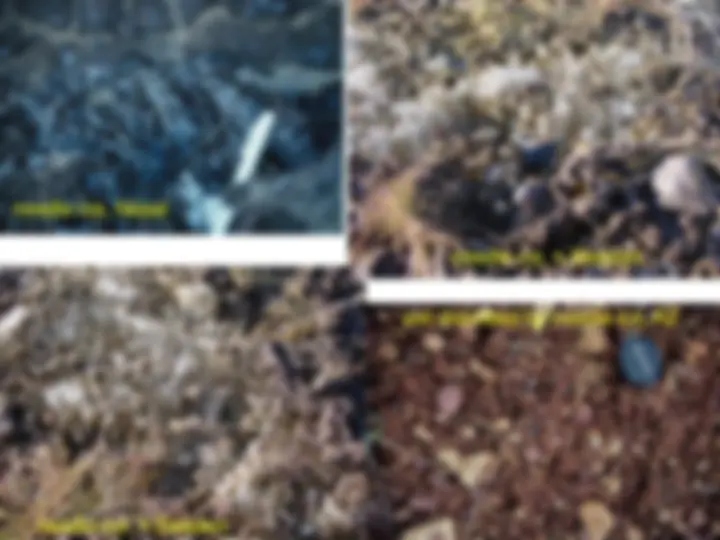
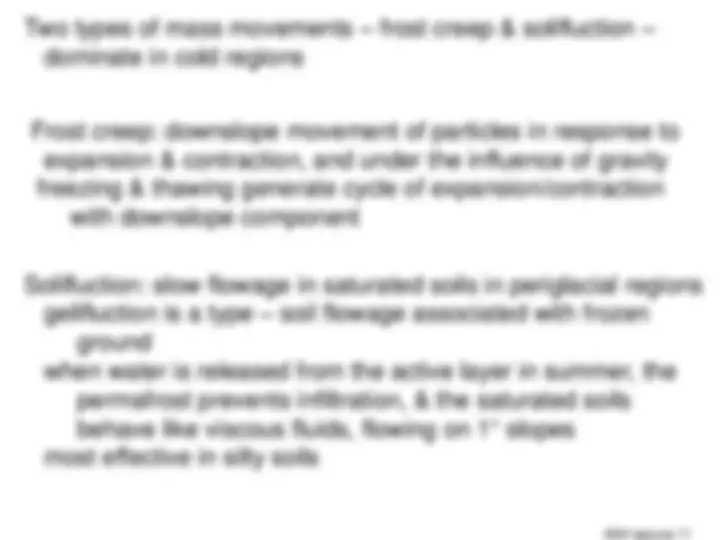
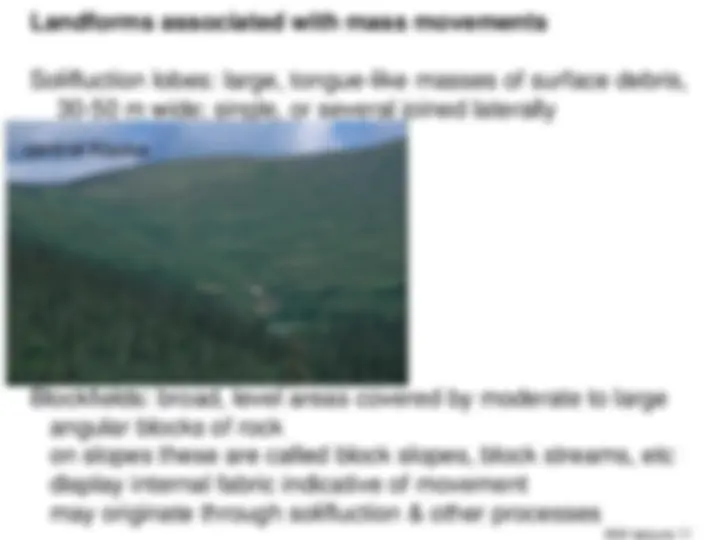
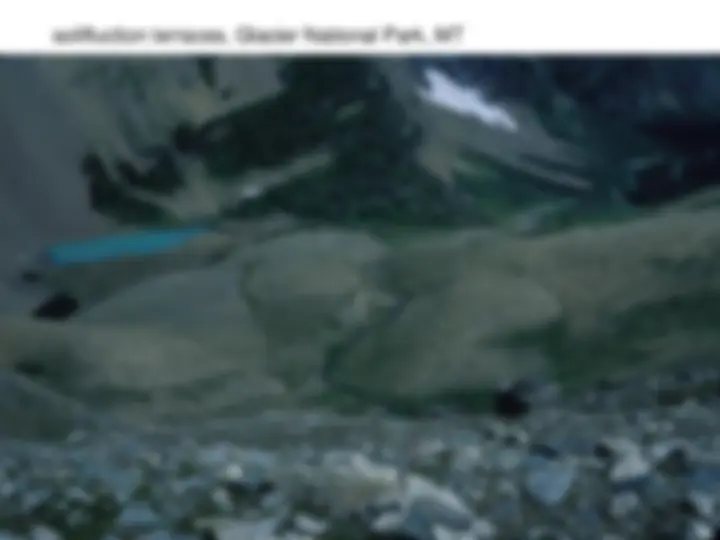
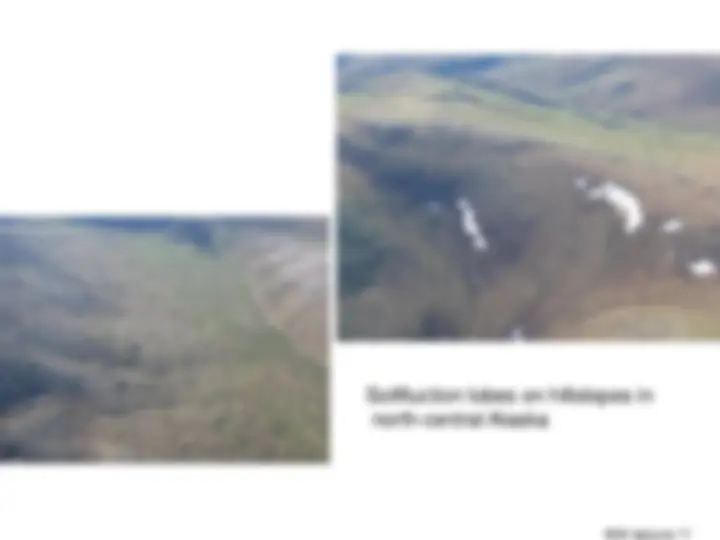
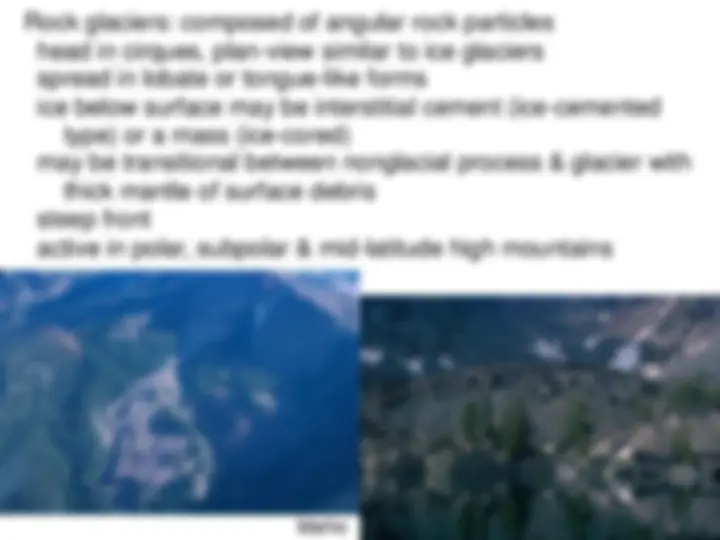
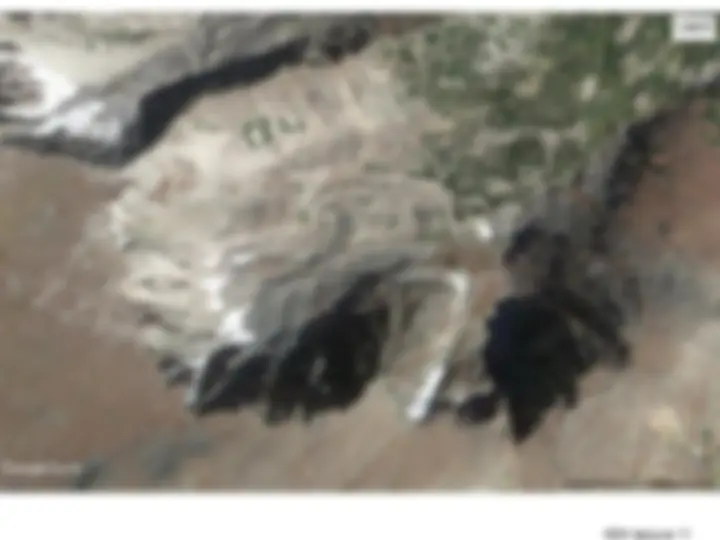
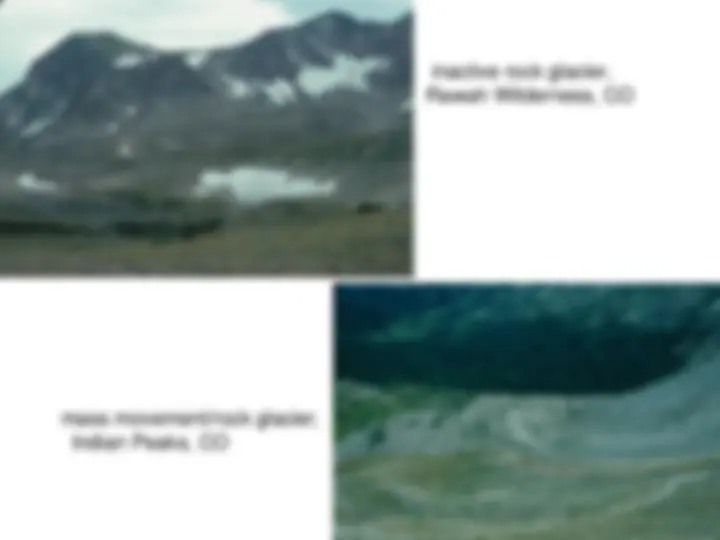


Study with the several resources on Docsity

Earn points by helping other students or get them with a premium plan


Prepare for your exams
Study with the several resources on Docsity

Earn points to download
Earn points by helping other students or get them with a premium plan
Community
Ask the community for help and clear up your study doubts
Discover the best universities in your country according to Docsity users
Free resources
Download our free guides on studying techniques, anxiety management strategies, and thesis advice from Docsity tutors
An in-depth exploration of periglacial processes and landforms, focusing on the unique geological phenomena that occur in cold climates. various topics, including the fundamental controlling factors of permafrost, the effects of frost action and mass movements, and the distribution and types of permafrost. Students will gain valuable insights into the mechanisms behind the formation of taliks, slumping streambanks, and other periglacial features, as well as the processes of frost wedging, heaving, and cracking.
Typology: Study notes
1 / 24

This page cannot be seen from the preview
Don't miss anything!

















Periglacial processes all non-glacial processes in cold climates average annual temperature between - 15 °C and 2°C fundamental controlling factors are intense frost action & ground surface free of snow cover for part of year Many periglacial features are related to permafrost – permanently frozen ground Permafrost table: upper surface of permafrost, overlain by 0 - 3 m thick active layer that freezes & thaws on seasonal basis Effects of frost action & mass movements enhanced by inability of water released by thawing active layer to infiltrate permafrost
Temperature fluctuations in permafrost to about 20-30 m depth; zero annual amplitude refers to level at which temperature is constant
Taliks: unfrozen ground around permafrost talik permafrost active layer surface of ground permafrost table (upper surface of permafrost)
Permafrost tends to mimic surface topography permafrost talik large lake small lake large river pf Effect of surface water on the distribution of permafrost – taliks underlie water bodies
Where annual temperature averages < 0 °C, ground freezing during the winter goes deeper than summer thawing – each year adds an increment & the permafrost grows until it is stopped by geothermal heat (~ 1°C/30 m decrease) Because permafrost accumulation rates are in cm/yr, thick permafrost can be tens of thousands of years old Permafrost underlies 26% of the Earth’s surface, in both continuous and discontinuous (talik) types The southern limit of continuous permafrost is at the - 6 °C annual isotherm, & discontinuous permafrost ends at - 1 °C Sporadic permafrost: isolated zones of frozen ground that are probably relicts of former climate
talus slope, Rocky Mountain N.P., CO talus slope, San Francisco Peaks, AZ alpine zone, Bighorn Mts., WY
nivation hollows, Logan Pass Glacier National Park, MT southeastern Alaska avalanche scars, Cabinet Mts., MT
Processes of Frost Action Frost wedging prying apart of solid material by ice effectiveness depends on number of freeze-thaw cycles; rapid freezing; high water content produces angular debris Frost heaving vertical displacement of matter in response to freezing; forces large particles surface-ward relative to fines thrusting – horizontal movement
Two hypotheses of explanation are i) frost-pull: stones & fines are lifted together; fines, being cohesive, collapse on thawing into cavities below the coarse particles ii) frost-push: stones conduct heat better than soil, so stones cool quickly, & the first ice forms beneath them & pushes them upward Probably, both processes act together Surface form occurs as needle ice (piprake) – ice crystals 1-3 cm long in unvegetated, loamy soils iii) frost cracking: development of fractures at low temperature due to thermal contraction, rather than associated ice expansion on freezing; can produce polygonal network of fractures
“snow snakes,” Snowy Mts., WY
White River National Forest, Colorado
Landforms associated with mass movements Solifluction lobes: large, tongue-like masses of surface debris, 30 - 50 m wide; single, or several joined laterally central Alaska Blockfields: broad, level areas covered by moderate to large angular blocks of rock on slopes these are called block slopes, block streams, etc display internal fabric indicative of movement may originate through solifluction & other processes
solifluction terraces, Glacier National Park, MT